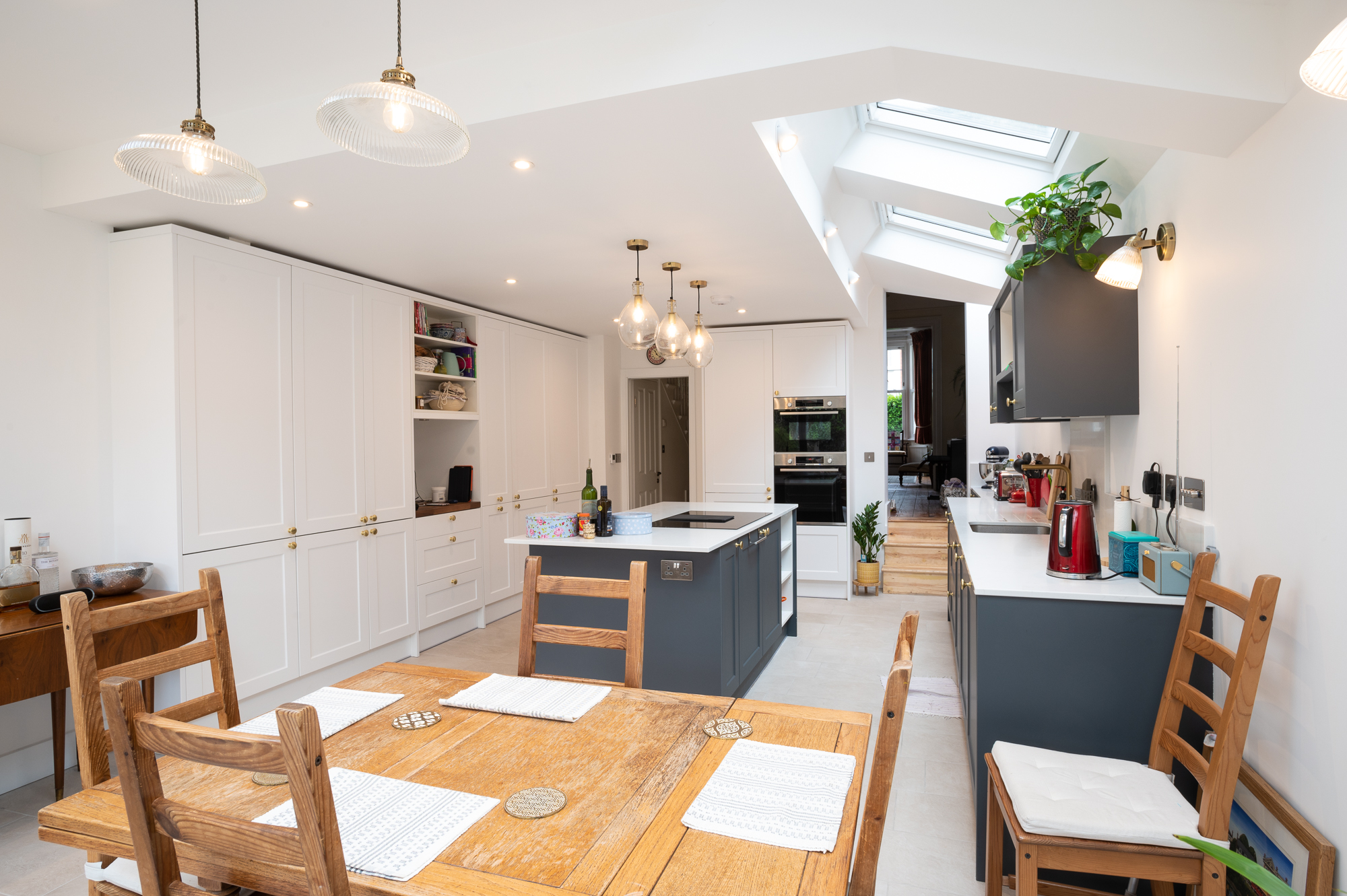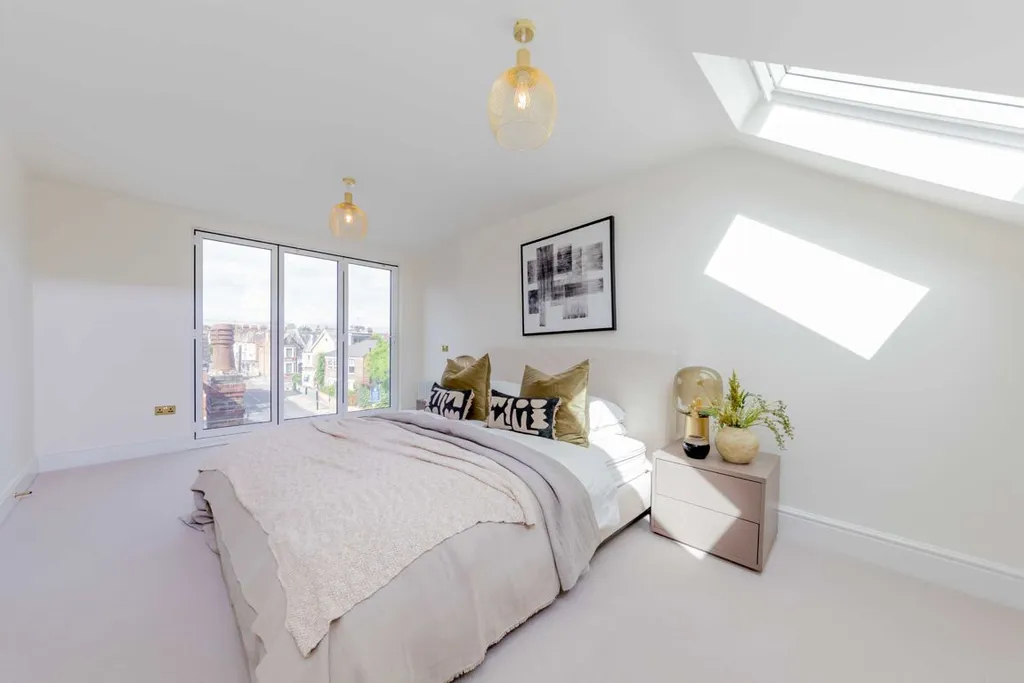Construction work and weather conditions have a tenuous relationship. And this is particularly apparent with regard to loft conversions. Temperatures, humidity, rain, and strong winds can not only affect the strength and stability of a structure, but the efficacy of materials and equipment as well.
This means that construction work has to take into account the weather conditions in order to optimise the safety and efficiency of the build. It can also have an immense impact on the timeframe and, thereby, the cost of the project.
However, this does not necessarily mean that you have to put your loft conversions, renovations or extensions on hold. With some planning and forethought, it is possible to work with the situation and still build your loft conversion in a timely manner.
Why is it important to consider weather conditions when planning and constructing your loft?
Almost any type of renovation is affected by weather conditions, and none more so than a loft conversion. The weather can have a significant impact on the safety of the builders, the stability of the structure, the protection of the house interiors, and the functionality of the building materials.
Taking these factors into consideration, weather conditions can dramatically affect the timeframe for the completion of the build.
Therefore, it is imperative that weather conditions are taken into consideration when planning a loft conversion.
What are the best seasons for construction work at your home?
Naturally, spring and summer are considered to be ideal for construction and build work. With longer days, warmer temperatures and less likelihood of rain, construction work can continue largely unhampered and without significant delays.
However, spring and summer are also peak times for construction companies and it is not always easy to find a builder to accommodate you within your chosen time slots.
Conversely, building companies are less busy during the winter months, which could mean that you can have your loft completed to enjoy and relax in by the summer. Though weather conditions may not be ideal, professional builders are well-equipped to work in different climates.
How do weather conditions affect building materials?
It is not only the structure that needs to be secured, building materials are also subject to the changes in weather conditions and therefore must be considered as well.
Brick or block laying cannot be done at temperatures below 3°C due to the potential for damage. To maximise the strength and performance of your building materials, it may be best to continue construction at warmer temperatures.
Similarly, strong winds can strain construction equipment and cause breakage. So, adequate precautionary measures must be taken to ensure the safety of the build.
How do weather conditions affect the structure?
In addition to the effect on building materials and the build process, the weather can also have an impact on the actual structure. Loft conversions usually involve the addition of extra insulation to the loft space by way of boarding the loft floor, installation of double-glazed windows, and wall insulation.
This extra insulation causes the temperature in the loft to fall which results in increased condensation during winter months.
Excessive condensation could lead to serious problems such as rot and mould in your loft. It is therefore crucial to ensure that the condensation in the loft space is under control.
Some simple steps to keep condensation in check include:
- Avoid blocking the existing roof vents by insulation or even storage boxes
- Make sure any hot water tanks placed in the loft are not releasing steam or malfunctioning
- Ensure the house is well ventilated
- Control the moisture being created within the house with the use of extractor fans in kitchens and bathrooms
Also, the installation of external loft ventilation in the form of ridge vents, tile vents, eaves vents, and lap vents, can help prevent excessive condensation while retaining loft insulation allowing the structure to remain well ventilated and insulated no matter the weather.
Is it possible to construct a loft conversion during winter months?
Yes. Though more difficult, it is still entirely possible to go ahead with a loft conversion construction during winter months provided that adequate safety measures are taken.
One simple solution is the use of polyurethane sheets to cover the side of the roof under construction and protect it from the elements. However, this method is only effective for skylight and dormer loft conversions where only one side of the roof is exposed.
For mansard and hip-to-gable conversions, where both sides of the roof are removed, it is best to opt for a tin hat. A tin hat is a temporary roof structure made up of corrugated tin sheets mounted to the scaffolding.
Though costly, at around £4000 + VAT, it provides the necessary protection to the builders and structure from inclement weather, so that the construction work can continue unhindered.
Similarly, covering the building materials to protect against frost damage, and placing mineral wool insulation quilts on top of fresh concrete, should ensure that your loft conversion can go ahead on schedule.
Conclusion
Every building project is likely to face challenges and delays due to numerous reasons such as labour or material shortages, equipment failures, and even design variations. The weather is simply one more aspect that contractors and project managers have to contend with.
Due to its unpredictability and damaging effects, weather conditions can cause lengthy delays which makes the construction extremely costly. As a result, homeowners are apprehensive about carrying out construction work during certain seasons.
However, this need not be the case. With diligent planning and careful preparation, professional builders are able to make the best out of any situation or season to deliver your loft conversion on time and on par with your highest expectations.
If you are looking to construct a beautiful loft conversion, contact the incredible team at Good Design and Build today! We are the foremost loft conversion specialists who build incredible loft conversions and home extensions.
We take pride in delivering exceptional projects with complete dedication and professionalism, so you can have a beautiful new space added to your home, no matter the season.




